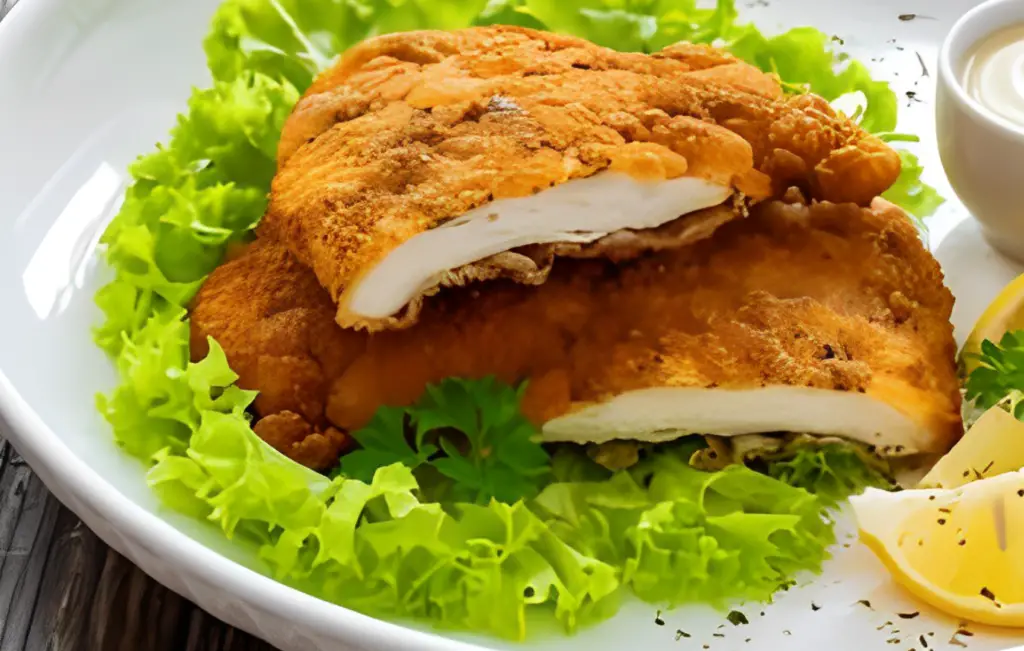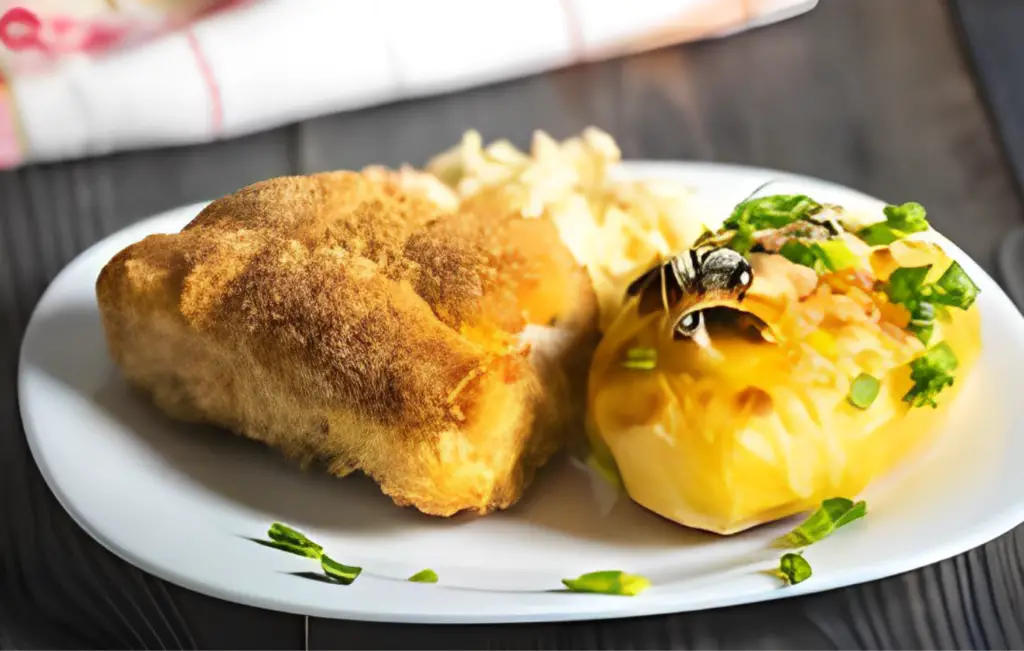Diving into the world of gourmet dishes, Cordon Bleu stands out as a culinary masterpiece that tantalizes taste buds across the globe. This article embarks on a flavorful journey, unraveling the layers of history, preparation, and variations of this exquisite dish. From its Swiss origins to modern adaptations, we explore the essence of Cordon Bleu, offering insights and tips for culinary enthusiasts eager to master this dish. So, buckle up for a gastronomic adventure that promises to enrich your cooking repertoire and delight your palate.
Introduction to Cordon Bleu
Ah, Cordon Bleu! Just the mention of this dish conjures images of succulent meat enveloped in a golden, crispy crust, oozing with melted cheese and the savory goodness of ham. But what exactly is this dish that has earned a spot in the hearts of food lovers worldwide?
Definition and Overview
At its core, Cordon Bleu is a marvel of culinary craftsmanship. Traditionally, it involves a tender cut of meat, such as chicken, veal, or pork, pounded thin and wrapped around a hearty filling of cheese and ham. This meaty parcel is then breaded and either pan-fried or deep-fried to achieve a delightful contrast of textures, from the crunchy exterior to the tender, juicy interior.
Place of Origin and Cultural Significance
Whisking you away to the picturesque landscapes of Switzerland, the birthplace of Cordon Bleu, this dish is more than just a meal; it’s a piece of culinary heritage. The term “Cordon Bleu” itself, translating to “Blue Ribbon” in French, harks back to a symbol of excellence, originally associated with the highest order of knighthood under King Henri III of France. Over time, this term has come to represent culinary creations of the highest standard, a testament to the dish’s esteemed status in the world of gastronomy.
In the quaint Swiss town of Brig, the concept of stuffing schnitzel with cheese and ham began to take shape around the 1940s, marking the inception of what we now know as Cordon Bleu. This innovative approach to traditional schnitzel captured the imagination of chefs and food enthusiasts alike, setting the stage for a dish that would transcend borders and evolve into numerous variations, each adding a unique twist to the original recipe.
As we delve deeper into the story of Cordon Bleu, we uncover the layers of history, technique, and passion that have shaped this dish into a beloved classic. Whether you’re a seasoned chef or a curious foodie, the journey through the world of Cordon Bleu is sure to inspire and excite. So, let’s continue to unravel the secrets behind this culinary gem, exploring its rich history, diverse variations, and the art of perfecting this dish in your own kitchen.
Historical Background
Diving into the historical tapestry of Cordon Bleu, we uncover a dish that’s as rich in history as it is in flavor. Imagine, if you will, a culinary journey that takes us back to the picturesque landscapes of Switzerland, where the story of Cordon Bleu begins to unfold. It’s a tale that marries culinary innovation with cultural evolution, making it a fascinating chapter in the world of gastronomy.
The History of Cordon Bleu
The origins of this delectable dish trace back to the mid-20th century, nestled within the Swiss borders. Picture the serene town of Brig, where the first whispers of a schnitzel filled with cheese began to stir. It was the 1940s, a time when culinary boundaries were being pushed and new classics were born. The term “Cordon Bleu” itself, translating to “Blue Ribbon,” harks back to an era of excellence and prestige, originally associated with the highest order of knighthood established by Henri III of France in 1578. This illustrious title, bestowed upon the finest cooks, symbolized a standard of culinary mastery that was nothing short of royal.
As we sift through the pages of culinary history, we find the first documented recipe of this dish in a cookbook from 1949, marking the official birth of Cordon Bleu. Yet, it wasn’t until the 1960s that Chicken Cordon Bleu made its grand entrance onto the international stage, courtesy of a New York Times feature. This marked a pivotal moment, as the dish began to weave its way into the hearts and kitchens around the globe.
The evolution of Cordon Bleu is a testament to the dish’s adaptability and enduring appeal. From its humble beginnings in a Swiss town to its status as a global culinary icon, Cordon Bleu has transcended its origins to become a symbol of culinary innovation and excellence. It’s a dish that not only tells a story of cultural heritage but also showcases the dynamic nature of culinary traditions, adapting and evolving with each passing decade.
As we relish the rich history of Cordon Bleu, we’re reminded of the power of food to connect us to different times, places, and cultures. It’s a dish that carries the essence of Swiss culinary heritage, yet has found a home in the hearts of food enthusiasts around the world. So, as we continue our exploration of this beloved dish, let’s savor not just its flavors but also the rich history that it brings to our tables.

Ingredients and Preparation
Embarking on the culinary adventure that is Cordon Bleu, we delve into the heart of this dish: its ingredients and the artistry involved in its preparation. This section is your backstage pass to understanding what makes Cordon Bleu a standout dish in the culinary world.
Main Ingredients
At the core of Cordon Bleu lies a symphony of main ingredients that harmonize to create its signature taste. The choice of meat—be it veal, chicken, or occasionally pork—serves as the canvas for this culinary masterpiece. The meat is tenderized and pounded thin, setting the stage for the rich fillings to come.
The filling, a melodic blend of ham and cheese, is where the magic happens. Traditional recipes call for a slice of ham and a slice of cheese, with Swiss varieties like Gruyère being a popular choice due to their melting properties and depth of flavor. This classic duo is enveloped within the meat, creating a core that is both savory and comforting.
Preparation Techniques
The preparation of Cordon Bleu is akin to a dance, a series of steps that lead to the final, delightful presentation. The traditional method involves breading the rolled meat and then pan-frying or deep-frying it to achieve a golden, crispy exterior that contrasts beautifully with the tender, juicy interior.
However, the culinary world is ever-evolving, and so are the methods of preparing Cordon Bleu. A modern twist on the classic involves baking the dish, offering a lighter alternative without compromising on taste. This variation caters to the health-conscious foodie, proving that tradition and innovation can coexist on the same plate.
Moreover, the dish’s versatility allows for creative liberties, such as omitting the bread crumbs for a less crunchy exterior or wrapping the ham around the chicken for a different texture and flavor profile. Some adventurous chefs even substitute bacon for ham, adding a smoky depth to the dish.
Cordon Bleu’s preparation is not just about following a recipe; it’s about the joy of creating and the freedom to adapt. Whether you stick to the traditional pan-frying method or opt for a baked version, the essence of Cordon Bleu lies in the harmony of its ingredients and the love poured into its preparation. So, as you embark on your own Cordon Bleu journey, remember that each step in the process is an opportunity to infuse your personal touch into this timeless classic.
Variations of Cordon Bleu
The Cordon Bleu universe is as vast as it is flavorful. Every corner of the globe adds its own spin to this beloved classic. So, let’s take a culinary journey to savor these delightful variations.
International Variations
Chicken Cordon Bleu is a global star, showcasing the dish’s versatility. It’s fascinating how it adapts and thrives across cultures.
Take Spain’s Cachopo, for example. It’s akin to Cordon Bleu but with a Spanish twist. Picture two juicy fillets, one hugging the other, with ham and cheese nestled in between. Then, there’s the Milanesa Rellena from Argentina and Uruguay. It’s like a sandwich but with breaded and fried (or baked) meat instead of bread. How ingenious!
Innovative Recipes
The realm of Cordon Bleu is a playground for culinary creativity. Vegetarian? Vegan? No problem! Tofu or seitan can step in for meat, and vegan cheeses are just as melty and delicious.
And for those watching their carbs or gluten intake, there are clever workarounds. Think almond flour or crushed pork rinds for breading. The goal is to keep that iconic texture without straying from dietary needs.
Cordon Bleu is a canvas waiting for your personal touch. Whether you’re a traditionalist or an innovator, there’s room for everyone. So, why not whip up your own rendition of this classic?

Serving and Pairing
When that golden crust of a Cordon Bleu beckons, it’s showtime. But the performance isn’t complete without the perfect supporting cast of sides and drinks.
Serving Suggestions
Presentation matters. A light salad can offer a refreshing contrast, while roasted veggies or a creamy gratin bring warmth and depth. Modern twists might include quinoa salads or sweet potato fries, adding a contemporary flair.
Wine and Beverage Pairings
The right drink can elevate the meal to new heights. A dry white wine like Chardonnay or Sauvignon Blanc can cut through the richness. Prefer red? A Pinot Noir might be your best bet. Its light body and fruity notes can complement the dish beautifully.
Craft beers and ciders also make great partners, offering a range of flavors to match the dish’s complexity. The key is balance, ensuring each sip adds to the experience.
In the world of Cordon Bleu, the possibilities are endless. Whether you lean towards classic pairings or adventurous combinations, it’s all about creating joy and memories around the table.
FAQs
Cordon Bleu sparks curiosity and questions, whether you’re a kitchen pro or just starting out. Let’s tackle some common queries.
Frequently Asked Questions
Best cheese for Cordon Bleu? Swiss cheeses like Gruyère or Emmental are top picks for their meltability and flavor. But don’t hesitate to try others like mozzarella or provolone.
Make ahead? Yes! Assemble it, then chill until you’re ready to cook. Just let it come to room temperature first for even cooking.
Quick and easy versions? Absolutely. Use pre-pounded chicken, deli ham, and sliced cheese for a speedy assembly. You can even skip the breading for a super-quick bake.
Cordon Bleu is a dish that invites exploration and experimentation. So, dive in, ask questions, and let your culinary curiosity lead you to delicious discoveries.
Conclusion
Cordon Bleu is more than a dish; it’s a culinary journey. It has traveled from Switzerland to kitchens worldwide, evolving yet remaining timeless. This exploration has shown us the depth and versatility of Cordon Bleu, from its rich history to the innovative ways it can be served and enjoyed.
Whether you’re crafting your first Cordon Bleu or putting a new spin on an old favorite, remember: it’s about balance, technique, and the joy of sharing a great meal. So, let’s keep the spirit of culinary adventure alive, using Cordon Bleu as a source of inspiration and creativity in our kitchens.
